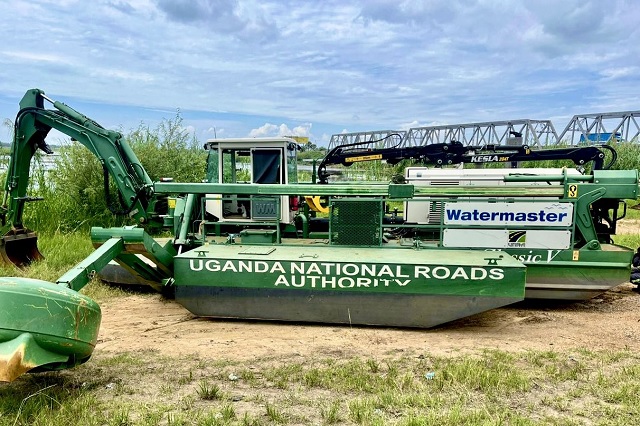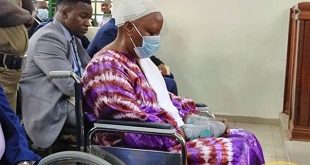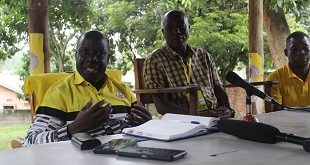
Pakwach, Uganda | THE INDEPENDENT | The Uganda National Roads Authority (UNRA) has started clearing the floating vegetation that is threatening the Pakwach Bridge on River Nile.
Over the past few months, a massive cluster of floating papyrus vegetation has accumulated near the bridge posing a threat to the structure that has since developed several cracks beneath.
In a statement issued on X on Sunday, Uganda National Roads Authority (UNRA ) confirmed their team has begun a dredging operation at Pakwach bridge following the accumulation of the floating vegetation.
“Our teams have mobilized and begun a dredging operation at Pakwach bridge following accumulation of the floating vegetation in the Nile River posing a threat to the bridge structure. Our “monster” dredger is in action with a rescue boat ready for any emergencies”, reads the statement in parts.
Besides the threat of floating Vegetation, the Pakwach bridge structure has over the years faced the challenge of flooding of River Tangi that often cuts off traffic along the Olwiyo-Pakwach road.
In April Last year, the Minister of Works & Transport, Gen. Edward Katumba Wamala informed leaders in the West Nile sub region about government’s plans to construct a new bridge to address the challenge of floods.
According to Katumba, the construction of a new bridge at Pakwach is already in their plan and will commence once they secure funds.
In an earlier interview, the Pakwach LCV Chairperson Robert Omito Steen, welcomed the intervention but instead tasked the government to expedite the plans of constructing a new bridge at Pakwach.
“The bridge has outlived its usefulness by more than ten years now. That is why it is developing some cracks”, he noted.
The current Pakwach bridge was built in the 1960s to connect the railway to the West Nile region.
*****
URN
 The Independent Uganda: You get the Truth we Pay the Price
The Independent Uganda: You get the Truth we Pay the Price



